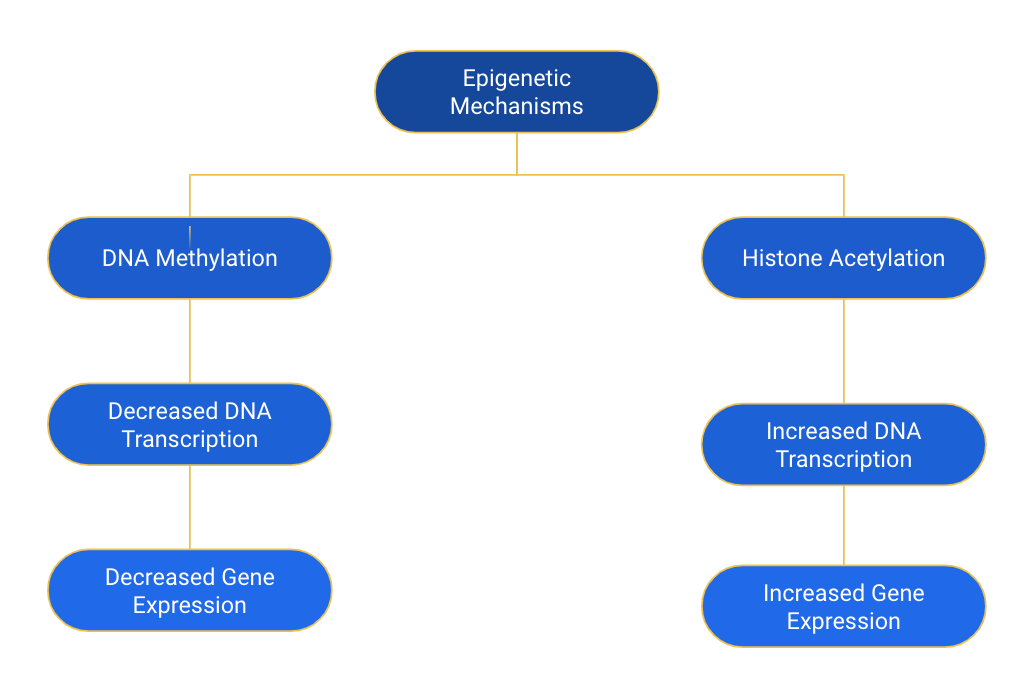In each human cell, DNA acts as the instruction manual for what that cell does. The DNA is transcribed to RNA, the RNA is translated to protein, and the protein performs a function. However, the body has mechanisms that modify gene expression, rather than the genetic code itself, in an attempt to control which portions of DNA are transcribed. These mechanisms, called epigenetic mechanisms, interestingly have the ability to alter phenotypic expression without altering the DNA sequence itself.
Cells have two main epigenetic mechanisms that help control which portions of the DNA are transcribed: DNA methylation and histone acetylation. Histones are proteins that have DNA wrapped around them for DNA packaging purposes. When histones are acetylated, the chromatin structure is relaxed, resulting in greater levels of gene transcription (7). Methylation of DNA, however, does the opposite; when an area close to a gene promoter is methylated, transcription factors are blocked and therefore gene expression is repressed. Epigenetic markers on DNA can be altered by environmental and lifestyle factors meaning that how one lives their life can alter how their genes are expressed. Most of these modifications are cleared in gametes (reproductive cells); however, there is emerging research that some of these modifications may be passed on to the next generation by resistance to reprogramming.


This is really clear and well written! the figure gives a nice representation too.
You did a good job of making these pathways understandable. As a (completely optional) suggestion, figures/graphics depicting how acetylation/methylation operates on a biochemical level would be welcome.
We’re not going to include these figures/graphics as we go into it in detail later in the website .
This is a really nice and concise background. If possible, I would elaborate a little bit more on the heritable aspect of epigenetics since that is especially relevant to the focus of your project.
In terms of figure details, I think that the bubbles are a little bit vertically misaligned from one side to the other and there seems to be an orange line going through the bubble for DNA Methylation.
Done!